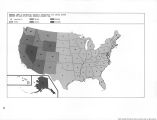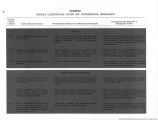| OCR Text |
Show in a single committee in each House of the Congress jurisdiction over public land programs involving the major public land management agencies, i.e., the Bureau of Land Management, the Forest Service, the National Park Service, and the Bureau of Sport Fisheries and Wildlife. This recommendation of the Commission will not require a major overhaul of congressional operations and will help reduce the burden on Congress. Fragmentation of Committee jurisdiction in Congress has, in our opinion, been a major cause of public land laws not being fully correlated with each other. The Nation cannot afford such fragmentation in the future. Budgeting, Financing, and Pricing Policies The key to having laws and policies operate effectively lies in the budgeting and appropriations process. Public land programs account for direct and indirect Federal expenditures of close to a billion dollars annually. The whole process, starting with budget formulation and ending with congressional appropriations, determines which programs are financed and which are not. The procedure of developing an annual budget and obtaining appropriations to support Federal programs typically extends over about 18 months. It starts with broad planning guidelines supplied by the Bureau of the Budget and proceeds through the assembling of field estimates into bureau-level budgets, bureau budgets into departmental budgets, and those budgets into the President's budget. The latter budget is the basis for congressional appropriation hearings and actions which determine the amount of money that is spent on various programs. Not all program funds come through the appropriation process. Because many public land programs are economic in character and result in substantial receipts, practices have developed in some cases for making funds available without going through the normal budgeting and appropriation process. Under the Knutson-Vandenberg Act, for example, timber operators can be required to pay for activities related to reforestation and improvement of sales areas.11 These funds are spent by the Forest Service without going through the appropriation process. In a different sense, a considerable part of the national forest road system is built by loggers as a part of their agreement to purchase timber; this, too, amounts to program financing outside of the appropriation process.15 The requirements placed on timber 14 16U.S.C. §576b (1964). 15 For example, in fiscal year 1968, direct appropriations for roads and trails on the national forests was $110 million. In that same year, an additional $17.6 million was appropriated from the roads and trails fund, which is made up of operators in both cases reduces the Federal receipts from timber sales that would otherwise go into the General Fund. The various practices that have grown up around the budget and appropriation process are so complex as to defy a simple description. We do not believe that the whole process should be changed just to ease the problems we see with respect to public land programs. On the other hand, we think that some changes can be made in connection with public land budgets that will result in better allocations of Federal funds to public land programs and in more accountability for funds that are expended. Consolidated Budget Recommendation 134: The President's budget should include a consolidated budget for public land programs that shows the relationship between costs and benefits of each program. At present, budgets for public land programs are scattered throughout the President's budget. The Forest Service budget appears as part of the Department of Agriculture's larger budget, while the budgets for other public land agencies appear as parts of the Department of the Interior budget. Even within that Department's budget, the Bureau of Land Management budget is separated from those of the National Park Service and the Bureau of Sport Fisheries and Wildlife. Within the budgets for each of these bureaus, the portion attributable to public land programs is often not identifiable. We propose that the budgets for the major public land agencies be presented as a consolidated budget within the President's budget to facilitate comparisons among agency programs and to provide a basis for developing regional budget information for public land programs. The present method of structuring the President's budget and compiling the budget estimates for public land programs almost assures that both similar programs in different agencies and different programs within an agency will be treated unevenly. Timber management programs of the Forest Service, for example, are treated by the Bureau of the Budget as part of the Department of Agriculture budget, while timber management programs of the Bureau of Land Management are treated as part of the much smaller Department of the Interior budget. There is no point at which they are compared ex- 10 percent of the receipts from national forest activities and timber purchaser built roads amounted to $69.3 million. George Banzhaf & Company, Public Land Timber Policy, App. E. PLLRC Study Report, 1969. 285 |







































































































































































































































































































































































